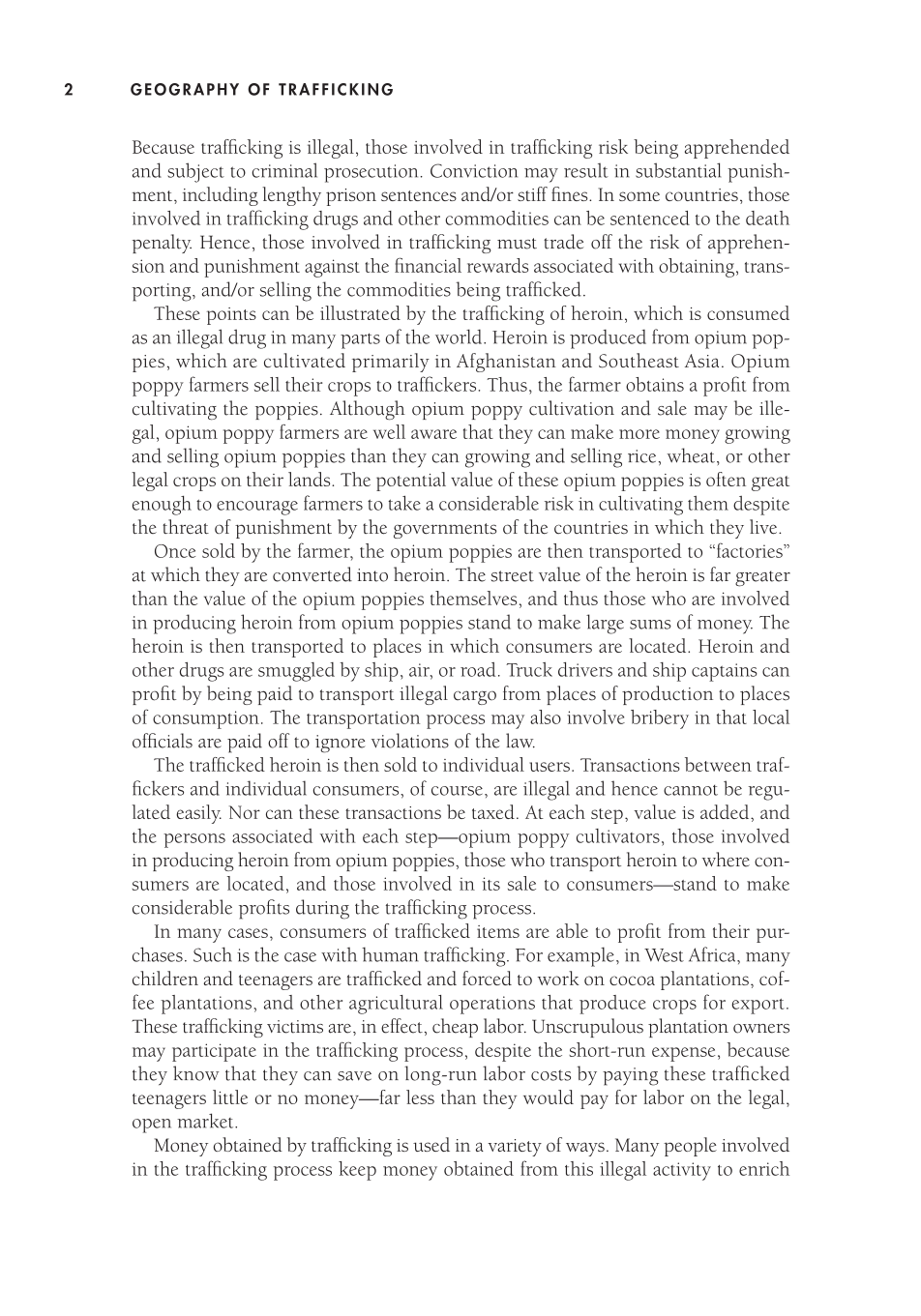2 GEOGRAPHY OF TRAFFICKING
Because trafficking is illegal, those involved in trafficking risk being apprehended
and subject to criminal prosecution. Conviction may result in substantial punish-
ment, including lengthy prison sentences and/or stiff fines. In some countries, those
involved in trafficking drugs and other commodities can be sentenced to the death
penalty. Hence, those involved in trafficking must trade off the risk of apprehen-
sion and punishment against the financial rewards associated with obtaining, trans-
porting, and/or selling the commodities being trafficked.
These points can be illustrated by the trafficking of heroin, which is consumed
as an illegal drug in many parts of the world. Heroin is produced from opium pop-
pies, which are cultivated primarily in Afghanistan and Southeast Asia. Opium
poppy farmers sell their crops to traffickers. Thus, the farmer obtains a profit from
cultivating the poppies. Although opium poppy cultivation and sale may be ille-
gal, opium poppy farmers are well aware that they can make more money growing
and selling opium poppies than they can growing and selling rice, wheat, or other
legal crops on their lands. The potential value of these opium poppies is often great
enough to encourage farmers to take a considerable risk in cultivating them despite
the threat of punishment by the governments of the countries in which they live.
Once sold by the farmer, the opium poppies are then transported to “factories”
at which they are converted into heroin. The street value of the heroin is far greater
than the value of the opium poppies themselves, and thus those who are involved
in producing heroin from opium poppies stand to make large sums of money. The
heroin is then transported to places in which consumers are located. Heroin and
other drugs are smuggled by ship, air, or road. Truck drivers and ship captains can
profit by being paid to transport illegal cargo from places of production to places
of consumption. The transportation process may also involve bribery in that local
officials are paid off to ignore violations of the law.
The trafficked heroin is then sold to individual users. Transactions between traf-
fickers and individual consumers, of course, are illegal and hence cannot be regu-
lated easily. Nor can these transactions be taxed. At each step, value is added, and
the persons associated with each step—opium poppy cultivators, those involved
in producing heroin from opium poppies, those who transport heroin to where con-
sumers are located, and those involved in its sale to consumers—stand to make
considerable profits during the trafficking process.
In many cases, consumers of trafficked items are able to profit from their pur-
chases. Such is the case with human trafficking. For example, in West Africa, many
children and teenagers are trafficked and forced to work on cocoa plantations, cof-
fee plantations, and other agricultural operations that produce crops for export.
These trafficking victims are, in effect, cheap labor. Unscrupulous plantation owners
may participate in the trafficking process, despite the short-run expense, because
they know that they can save on long-run labor costs by paying these trafficked
teenagers little or no money—far less than they would pay for labor on the legal,
open market.
Money obtained by trafficking is used in a variety of ways. Many people involved
in the trafficking process keep money obtained from this illegal activity to enrich

































































































































































































































































































































































































